Tangeretin

Tangeretin structure
|
Common Name | Tangeretin | ||
|---|---|---|---|---|
| CAS Number | 481-53-8 | Molecular Weight | 372.369 | |
| Density | 1.2±0.1 g/cm3 | Boiling Point | 565.3±50.0 °C at 760 mmHg | |
| Molecular Formula | C20H20O7 | Melting Point | 155 °C | |
| MSDS | Chinese USA | Flash Point | 248.4±30.2 °C | |
| Symbol |

GHS06 |
Signal Word | Danger | |
Use of TangeretinTangeretin, a flavonoid from citrus fruit peels, has been proven to play an important role in anti-inflammatory responses and neuroprotective effects in several disease models, and was also selected as a Notch-1 inhibitor.IC50 value:Target: Notch-1In vitro: Tangeretin enhanced the radiosensitivity of GC cells as demonstrated by MTT and colony formation assays. Tangeretin also attenuated radiation-induced EMT, invasion and migration in GC cells, accompanied by a decrease in Notch-1, Jagged1/2, Hey-1 and Hes-1 expressions. Tangeretin triggered the upregulation of miR-410, a tumor-suppressive microRNA. Furthermore, re-expression of miR-410 prevented radiation-induced EMT and cell invasion [1]. In vivo: In this study, we investigated the in vivo anti-RSV activity of tangeretin in 3-week-old male BALB/c mice. A plaque reduction assay and fluorescence quantitative polymerase chain reaction (FQ-PCR) showed that tangeretin inhibited RSV replication in the lung of mice [2]. |
| Name | tangeretin |
|---|---|
| Synonym | More Synonyms |
| Description | Tangeretin, a flavonoid from citrus fruit peels, has been proven to play an important role in anti-inflammatory responses and neuroprotective effects in several disease models, and was also selected as a Notch-1 inhibitor.IC50 value:Target: Notch-1In vitro: Tangeretin enhanced the radiosensitivity of GC cells as demonstrated by MTT and colony formation assays. Tangeretin also attenuated radiation-induced EMT, invasion and migration in GC cells, accompanied by a decrease in Notch-1, Jagged1/2, Hey-1 and Hes-1 expressions. Tangeretin triggered the upregulation of miR-410, a tumor-suppressive microRNA. Furthermore, re-expression of miR-410 prevented radiation-induced EMT and cell invasion [1]. In vivo: In this study, we investigated the in vivo anti-RSV activity of tangeretin in 3-week-old male BALB/c mice. A plaque reduction assay and fluorescence quantitative polymerase chain reaction (FQ-PCR) showed that tangeretin inhibited RSV replication in the lung of mice [2]. |
|---|---|
| Related Catalog | |
| References |
| Density | 1.2±0.1 g/cm3 |
|---|---|
| Boiling Point | 565.3±50.0 °C at 760 mmHg |
| Melting Point | 155 °C |
| Molecular Formula | C20H20O7 |
| Molecular Weight | 372.369 |
| Flash Point | 248.4±30.2 °C |
| Exact Mass | 372.120911 |
| PSA | 76.36000 |
| LogP | 2.66 |
| Vapour Pressure | 0.0±1.5 mmHg at 25°C |
| Index of Refraction | 1.566 |
| InChIKey | ULSUXBXHSYSGDT-UHFFFAOYSA-N |
| SMILES | COc1ccc(-c2cc(=O)c3c(OC)c(OC)c(OC)c(OC)c3o2)cc1 |
| Water Solubility | insoluble |
CHEMICAL IDENTIFICATION
HEALTH HAZARD DATAACUTE TOXICITY DATA
|
| Symbol |

GHS06 |
|---|---|
| Signal Word | Danger |
| Hazard Statements | H300 |
| Precautionary Statements | P264-P301 + P310 |
| Personal Protective Equipment | Eyeshields;Faceshields;Gloves;type P2 (EN 143) respirator cartridges |
| Hazard Codes | T:Toxic; |
| Risk Phrases | R25 |
| Safety Phrases | S45 |
| RIDADR | UN 2811 |
| RTECS | DJ3102725 |
| Hazard Class | 6.1 |
| Precursor 8 | |
|---|---|
| DownStream 8 | |
|
Phytochemical profile and antioxidant activity of physiological drop of citrus fruits.
J. Food Sci. 78(1) , C37-42, (2013) The phytochemical content and the antioxidant activity (AA) of physiological drop of the main citrus species grown in China were investigated. Among the flavonoids, hesperidin was found mostly in mand... |
|
|
Polymethoxylated flavones potentiate the cytolytic activity of NK leukemia cell line KHYG-1 via enhanced expression of granzyme B.
Biochem. Biophys. Res. Commun. 456(3) , 799-803, (2015) Polymethoxylated flavones (PMFs) are found in the peel tissues of some citrus species. Here, we report that PMFs, such as nobiletin, potentiate the cytolytic activity of KHYG-1 natural killer (NK) leu... |
|
|
Tangeretin stimulates glucose uptake via regulation of AMPK signaling pathways in C2C12 myotubes and improves glucose tolerance in high-fat diet-induced obese mice.
Mol. Cell. Endocrinol. 358(1) , 127-34, (2012) Although the flavonoid tangeretin (5, 6, 7, 8, 4'-pentamethoxyflavone) is known to possess beneficial health effects, the anti-diabetic effects and the mechanism of action have not been elucidated. Tr... |
| 4H-1-Benzopyran-4-one, 2-(4-methoxyphenyl)-5,6,7,8-tetramethoxy- |
| Ponkanetin |
| 4',5,6,7,8-pentamethoxyflavone |
| 4H-1-Benzopyran-4-one, 5,6,7,8-tetra-methoxy-2-(4-methoxyphenyl)- |
| Flavone, 5,6,7,8,4'-pentamethoxy |
| Flavone, 4',5,6,7,8-pentamethoxy- |
| TANGERETIN,NATURAL |
| MFCD00017438 |
| 4H-1-Benzopyran-4-one, 5,6,7,8-tetramethoxy-2-(p-methoxyphenyl)- |
| 5,6,7,8,4'-Pentamethoxyflavone |
| 4H-1-Benzopyran-4-one, 5,6,7,8-tetramethoxy-2-(4-methoxyphenyl)- |
| 5,6,7,8-Tetramethoxy-2-(4-methoxyphenyl)-4H-chromen-4-one |
| TANGARETIN |
| Tangeritin |
| Tangeritine |
| EINECS 207-570-1 |
| Tangeretin |
| 5-18-05-00491 (Beilstein Handbook Reference) |
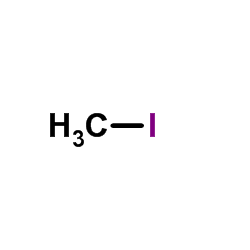 CAS#:74-88-4
CAS#:74-88-4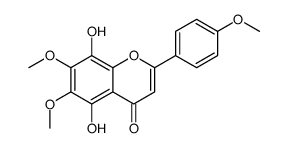 CAS#:2798-22-3
CAS#:2798-22-3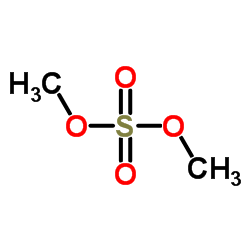 CAS#:77-78-1
CAS#:77-78-1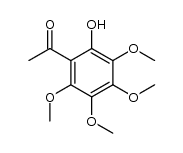 CAS#:3162-28-5
CAS#:3162-28-5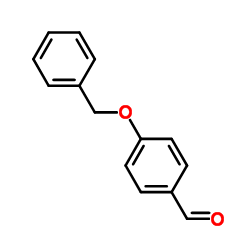 CAS#:4397-53-9
CAS#:4397-53-9 CAS#:40110-95-0
CAS#:40110-95-0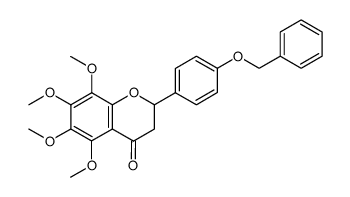 CAS#:73898-14-3
CAS#:73898-14-3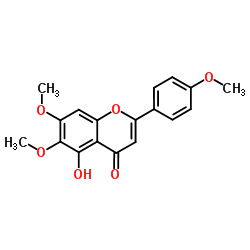 CAS#:19103-54-9
CAS#:19103-54-9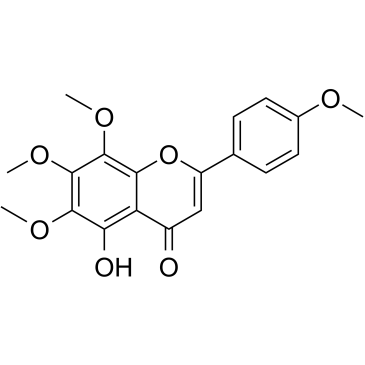 CAS#:2798-20-1
CAS#:2798-20-1 CAS#:21763-80-4
CAS#:21763-80-4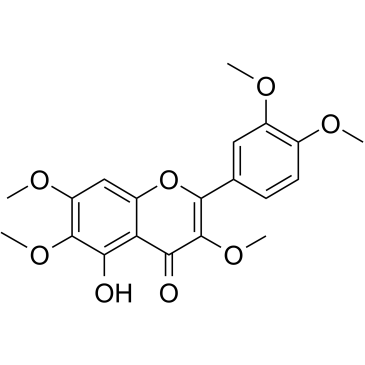 CAS#:479-90-3
CAS#:479-90-3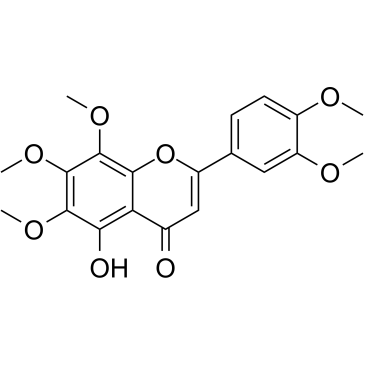 CAS#:2174-59-6
CAS#:2174-59-6 CAS#:1176-88-1
CAS#:1176-88-1![4H-1-Benzopyran-4-one,2-[4-(acetyloxy)phenyl]-5,6,7,8-tetramethoxy- structure](https://image.chemsrc.com/caspic/488/6959-55-3.png) CAS#:6959-55-3
CAS#:6959-55-3 CAS#:577-26-4
CAS#:577-26-4
